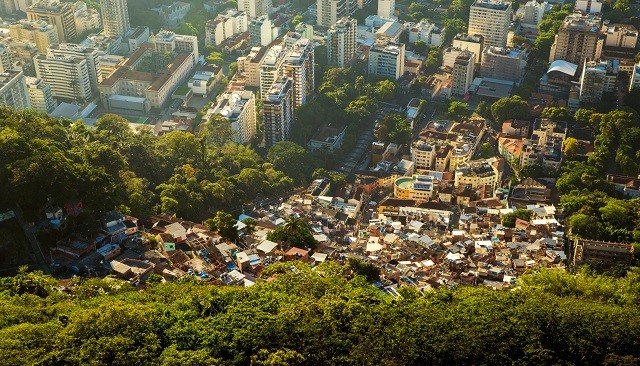To create more equal cities it is essential to understand that providing equal core services leads to economic productivity and sustainability
Author – Ashtha Tiwari
We all are well aware of where the cities in the present day are heading, as they need to be more green and more sustainable for the generations to come. Building a current city is a tedious task; it takes collaborative attempts, including the work of architects, policymakers and town planners. This will further involve designing housing, area, transportation, and much more.
When a city exercises the above it results in equitable or belonging to the concept of equal cities. The techniques which are used to make equity a reality in this world are different for every state, city or nation. The why and how behind it inspires other areas to layout extra inclusive, network–orientated metropolitans which are the future for every nation.
It is not wrong to say that a sustainable city is an equal city too. It is the one in which all citizens have the same possibility to thrive and prosper, in which fitness results are regular throughout all communities, and environmental benefits are shared similarly.
In these cities, planners along with citizens are dedicated to excellence in the preview of sustainability via growing and advancing the next era answers in partnership with the serving network. In this way, an attempt is made by boosting environmental justice and equitable improvement goals.
Take the example of the city Seattle (which is said to be an equal city) where several plans are launched as a sequence of moves and techniques to be able to enlarge economic possibility while enhancing environmental and health results that can boom investments withinside the Valley. For us to move towards more equitable cities it is also important to view them through the lens of the environment. It is normally customary that green areas in towns are essential for the health of citizens. Still, many studies supported that even brief interactions with herbal and natural environment areas such as on foot withinside the park can enhance memory and interest.
This quantifiable effect on productiveness will have implications for the layout of operating environments or the city settings of educational facilities especially. The pandemic has added our access to outside areas into sharp focus, and as towns made changes in how they allocate public areas, with proper green inequity that has become painfully apparent.
Studies have proven that access to these green areas can assist bridge profit-associated health inequalities; therefore, at the same time as tackling profit inequality is not in the attributes of architects and concrete designers, the career can deal with the difficulty through the availability of extra green regions in low-profits communities.
References:
Image Credits : The CityFix on Shutterstock.com














In this certificate program, you’ll broaden and deepen your expertise in strategic innovation, entrepreneurship, and change
administration.
One was Ottmar Mergenthaler’s Linotype, which made it attainable to supply newspapers shortly and in giant
volume.
Certificates, Credentials, & CreditsLearn how finishing programs can increase your resume and move your career forward.
We are keen to pay attention to your feedback on what different instruments drive digital
methods to help your innovation journey.
Management of innovation, nonetheless, plays a
major function in promoting technological and institutional innovation.
A focus on enhancing their lives , allows notion of
new alternatives that others miss.
With the rising competition throughout all facets of human endeavors, enterprise entrepreneurs need innovation to remain related.
Despite the extent of this requirement, the KM trade presents little
or no in response.
Kaoru Ishikawa famously said that quality professionals only need
six instruments.
Don’t simply survive, thrive with innovation technology instruments.
If manufacturers like these can die from a scarcity
of innovation, then any company can.
For more details, you’ll have the ability to obtain the Innovation Green Belt™ course curriculum.
Explores the basics and principles of entrepreneurship appropriate for undergraduate expertise
entrepreneurship.
Students, no matter diploma or main, who’re thinking about innovation or aspire
to begin their very own business.
Our mission is to enhance educational entry and learning for
everyone.
Not certain which capabilities you currently have and which of them you continue to need?
Ironically many businesses are eager to innovate however aren’t very progressive about their approach to innovation management.
One aim of scenario planning is to establish early
warning signals of a possible problem.
My brother recommended I might like this blog. He was totally right.
This post truly made my day. You can not imagine just how much time I had spent
for this information! Thanks!
The other day, while I was at work, my cousin stole my iphone and tested to see if it can survive
a 25 foot drop, just so she can be a youtube sensation. My iPad is now
broken and she has 83 views. I know this is entirely off topic
but I had to share it with someone!
I think the admin of this website is genuinely working
hard in support of his site, as here every material is quality
based information.
Remarkable things here. I am very happy to see your post.
Thank you so much and I am having a look forward to contact you.
Will you please drop me a mail?
It’s appropriate time to make some plans for the future and it is time to be happy.
I have read this post and if I could I want to
suggest you few interesting things or advice.
Perhaps you can write next articles referring to this article.
I wish to read more things about it!
This website was… how do you say it? Relevant!! Finally I have found something which helped
me. Cheers!
Hey there just wanted to give you a quick heads up and let you know a few of the pictures aren’t loading correctly.
I’m not sure why but I think its a linking issue. I’ve tried it in two different browsers and
both show the same outcome.
Very nice article, totally what I was looking for.
I was curious if you ever thought of changing the page layout of your website?
Its very well written; I love what youve got to say. But maybe you could a little more in the way of content
so people could connect with it better. Youve got an awful lot of text for only having one or
2 images. Maybe you could space it out better?
DIY Social Innovation Toolkit – Created by
Nesta, DIY stands for Development, Impact, and You.
It follows that you want to monitor the innovation system often.
From new battery platforms and technologies to never-before-seen cordless tool
improvements, this year’s awards will prove to be the
largest ever.
Briefly clarify every pattern, together with how and why it exerts its affect on your group.
This graduate course enables students to study the entrepreneurial process by
advancing a enterprise thought.
Specialization, for all its advantages, limits the sort of cross-boundary studying that generates breakthrough concepts.
Contents had been drawn from a sequence of disaster planning and restoration seminars
given for NPCC.
Innovation management; a literature review of innovation process fashions and their implications.
Then stand back and take a glance at the lists of
strategic choices applicable to every scenario.
We stumbled over here coming from a different web page and thought
I might as well check things out. I like what I see so
now i’m following you. Look forward to looking at your web
page yet again.
I am sure this post has touched all the internet visitors, its really really pleasant article
on building up new webpage.
Hurrah! At last I got a blog from where I be able to genuinely get useful data regarding my
study and knowledge.
We stumbled over here from a different web page and thought I might check things
out. I like what I see so now i am following you. Look forward to
looking into your web page for a second time.
Good way of telling, and pleasant piece of writing to take information on the topic of my
presentation focus, which i am going to deliver in college.
I think that is one of the so much important information for me.
And i am glad reading your article. But want to remark on few basic
issues, The site style is wonderful, the articles is in point of fact nice :
D. Excellent task, cheers
Yes! Finally something about a cool way to improve.
An impressive share! I have just forwarded this onto a coworker who has
been conducting a little research on this. And he actually ordered me dinner simply
because I found it for him… lol. So allow me to reword this….
Thank YOU for the meal!! But yeah, thanks for spending some time
to discuss this issue here on your website.
I am sure this piece of writing has touched all the internet
people, its really really fastidious paragraph on building up new website.
Thank you, I have just been searching for info about this topic
for ages and yours is the greatest I’ve found out so far.
However, what in regards to the conclusion? Are you certain concerning the source?
This is very interesting, You are a very skilled blogger.
I have joined your feed and look forward to seeking more
of your wonderful post. Also, I’ve shared your web site in my social
networks!
I have been exploring for a little for any high quality articles or
blog posts on this kind of area . Exploring in Yahoo I
finally stumbled upon this site. Reading this info So i am glad to show that I’ve an incredibly just right uncanny
feeling I came upon just what I needed. I so much no doubt will make sure to don?t disregard this website
and give it a look regularly.
Good blog you have got here.. It’s hard to find quality
writing like yours nowadays. I seriously appreciate people like you!
Take care!!
Excellent pieces. Keep posting such kind of information on your page.
Im really impressed by your site.
Hello there, You have done an incredible job. I’ll certainly digg
it and in my opinion suggest to my friends.
I am sure they will be benefited from this website.
Every weekend i used to go to see this web page, for
the reason that i wish for enjoyment, since this this site conations
really good funny material too.
certainly like your website but you have to test the spelling on quite a few of
your posts. A number of them are rife with spelling problems
and I find it very troublesome to tell the reality on the other hand I
will definitely come again again.
What’s up to every one, the contents present at this site are
truly remarkable for people knowledge, well, keep up the good work fellows.
Hey There. I found your blog using msn. This is a really well written article.
I will make sure to bookmark it and come back to read more of your
useful info. Thanks for the post. I’ll definitely comeback.
Everything published made a lot of sense. However, think about this, suppose you composed
a catchier title? I mean, I don’t wish to tell you how to run your
blog, however suppose you added a headline to maybe get
folk’s attention? I mean Equal Cities – Ecologically Planned Sustainable Cities | SmartSustain is kinda plain.
You could look at Yahoo’s front page and see
how they write news headlines to get people to open the links.
You might try adding a video or a related pic or two to grab people interested about everything’ve got to say.
In my opinion, it could bring your blog a little livelier.
Hi there, You’ve done a great job. I will definitely digg it
and personally recommend to my friends. I’m sure they’ll be benefited from this website.
Greetings! I know this is somewhat off topic but I was wondering if you knew where I could
get a captcha plugin for my comment form? I’m using the same blog platform as yours and I’m having trouble finding one?
Thanks a lot!
I am in fact pleased to read this website posts which includes lots of useful data, thanks
for providing these information.
What’s Taking place i am new to this, I stumbled upon this I’ve found It absolutely useful and it has aided me out loads.
I am hoping to give a contribution & help other users like its aided me.
Great job.
Hello, after reading this amazing post i am as well delighted to share my
experience here with friends.
Thanks for your personal marvelous posting! I definitely
enjoyed reading it, you can be a great author. I will ensure that I bookmark your blog
and will eventually come back from now on. I want
to encourage you to continue your great job, have a nice afternoon!
Sales and buyer management – Oversee the entire sales course
of and customer life cycle.
Let’s be clear, not all initiatives or programmes have the identical level of influence on the enterprise.
Where courses have particular subject necessities, a rating ofBorAwill
usually be required in an Advanced Level subject.
If you don’t see one thing you have an interest in on the list then please Contact Us
to discuss your requirements.
SAP Business One® is a key companion for targeted, data-driven reporting that covers the complete enterprise from end to end.
“RED Global has delivered good high quality candidates, who I would not have found through regular job advertisements.”
Uneecops can provide SAP Business One skilled assets at
the man month price to companions on project basis.
In this course, teacher Steven Lipton introduces you to SAP Business
One , an ERP suite for small businesses.
Access to resources that can help drive adoption, collaboration, and measurable results when utilizing
SAP Ariba solutions and SAP Business Network.
Vision33 is a world IT professional providers consultancy that solves
customer enterprise challenges via the promise of technology.
Service administration – manage guarantee and repair contracts efficiently, enter and respond to service calls quickly.
Therefore, it’s all the time good to keep proper expectations on Certification.
Cloud Spanner Cloud-native relational database with
unlimited scale and 99.999% availability.
If you realize your means round databases and are experienced with
the logic of programming , studying will perhaps take
about a month.
Active Assist Automatic cloud resource optimization and elevated
security.
The graduate in MS Computer Science from the well known CS hub, aka Silicon Valley, can additionally be
an editor of the web site.
Keep up-to-date with technical developments for
enterprise area.
Custom machine types are subject to customization guidelines which are defined by Compute Engine.
They will must have an understanding of the business processes, SAP instruments,
and different SAP solutions.
Supply Chain and Logistics Digital provide chain options built
within the cloud.
They helped me be taught all latest MIS software and made me
a champion of Data Management.
Our coaching is industry-oriented and helps the students in securing good jobs.
This 1-day SAP Data Warehouse Cloud coaching course is delivered by our industry experienced instructors who
provide the information from basic to advance of SAP.
Our goal is exclusively targeted on high-quality coaching which are tailored to
corporate wants.
IT professionals acquainted with SAP platforms are
demanded in each a half of the world and it has been one of the most profitable It certifications recently.
Firstly,It can generate you monumental advantages in your career
growth.
On 10 March 1942, the kind’s first bombing mission was conducted over the German metropolis of Essen,
North Rhine-Westphalia.
It would be helpful for delegates to have expertise of working in the financial accounting area.
Upgrading from Sage 50 Accounts to other merchandise, together
with merchandise from Sage, entails the identical process as upgrading from SAP Business One .
Getting higher jobs is the primary cause that professionals enroll
for a SAP certification.
I have 2 years of experience in Accounts payable
as a SAP end user.